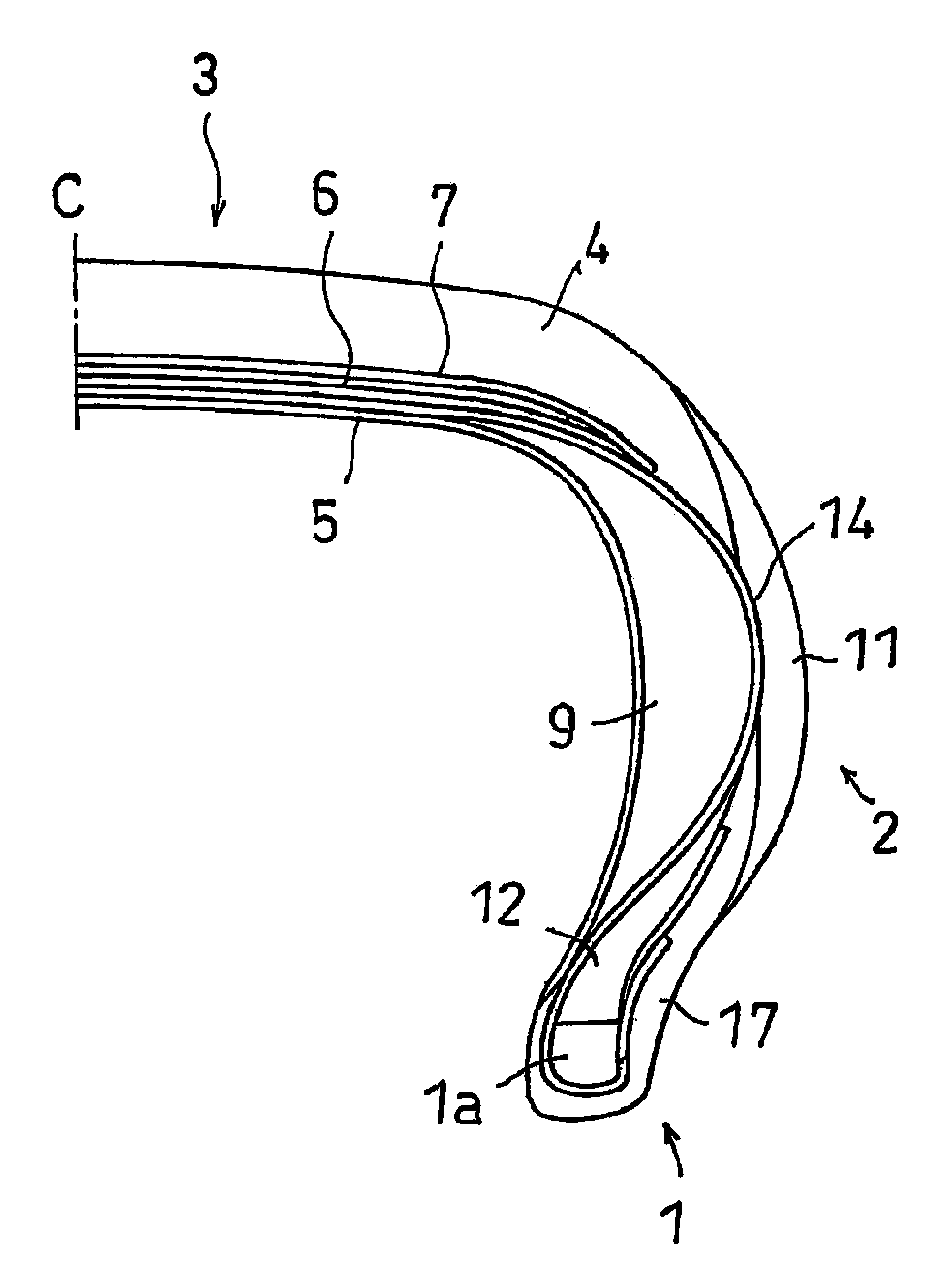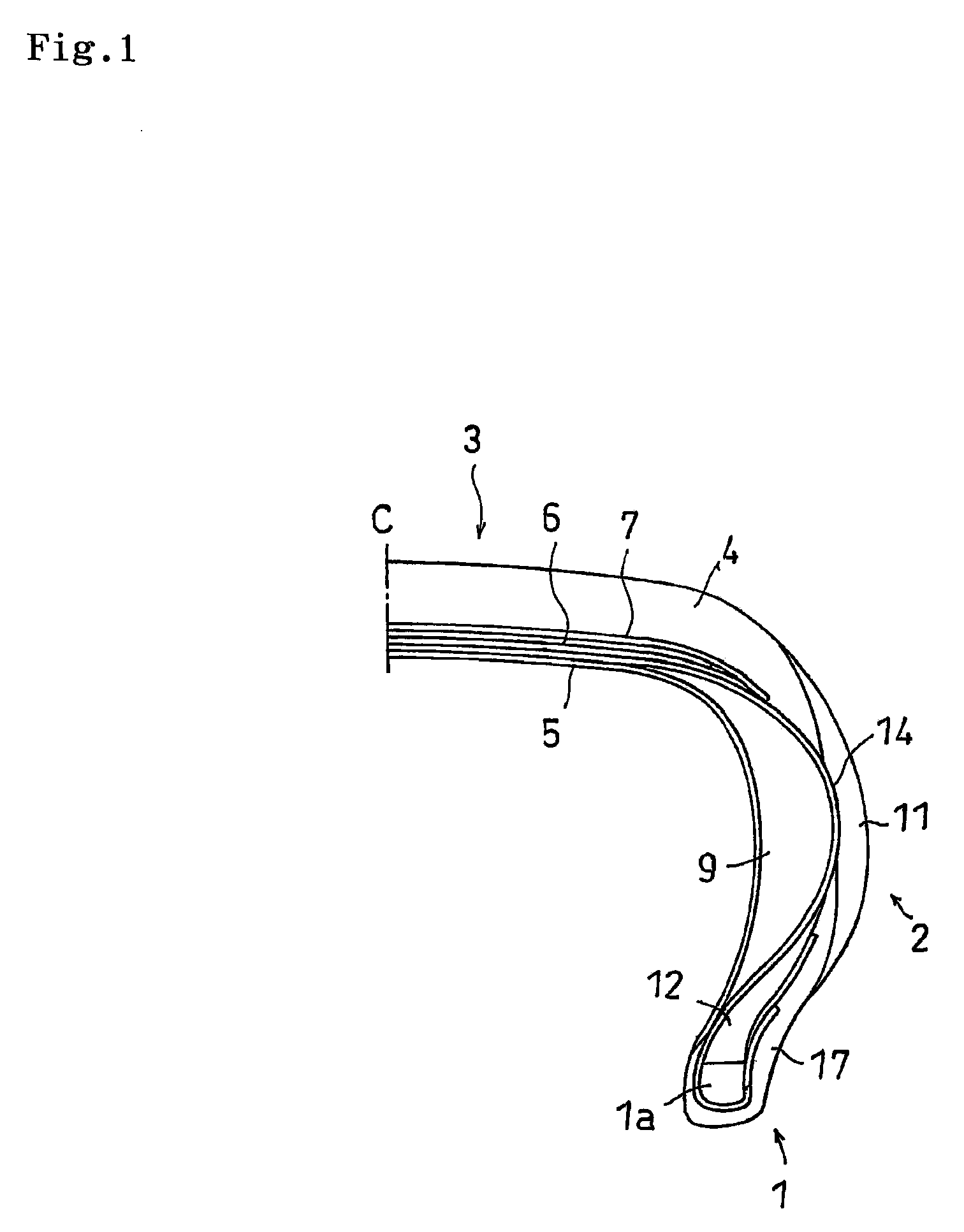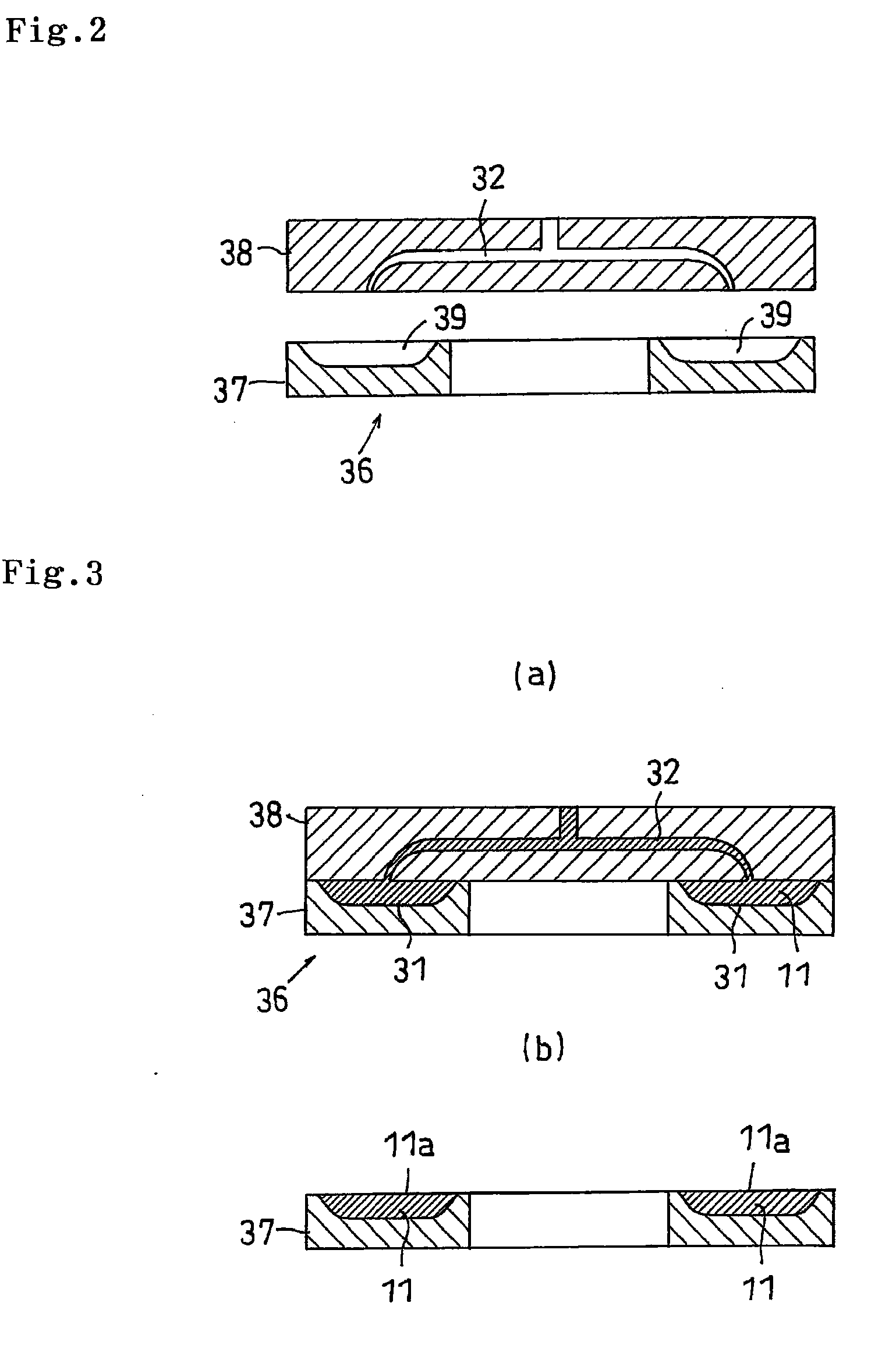Manufacturing Method Of Pneumatic Tire
- Summary
- Abstract
- Description
- Claims
- Application Information
AI Technical Summary
Benefits of technology
Problems solved by technology
Method used
Image
Examples
Embodiment Construction
[0027]An embodiment of the present invention will be explained with reference to the drawings.
[0028]FIG. 1 is a half cross sectional view of a tire meridian line showing one example of a pneumatic tire manufactured by the present invention. The pneumatic tire comprises a pair of bead portions 1, sidewall portions 2 extending from respective bead portions 1 radially outward of the tire, and a tread portion 3 provided between the sidewall portions 2. In the bead portion 1, there are arranged an annular bead 1a constituted by a convergence body of a steel wire or the like, and a bead filler 12 formed as a triangular cross sectional shape in an outer side in a tire diametrical direction of the bead 1a, and an end portion of a carcass ply 14 is wound up to an outer side in such a manner as to pinch them.
[0029]An inner liner rubber 5 for retaining a pneumatic pressure is arranged in an inner peripheral side of the carcass ply 14. Further, a rim strip rubber 17 is arranged in an outer peri...
PUM
 Login to View More
Login to View More Abstract
Description
Claims
Application Information
 Login to View More
Login to View More - R&D
- Intellectual Property
- Life Sciences
- Materials
- Tech Scout
- Unparalleled Data Quality
- Higher Quality Content
- 60% Fewer Hallucinations
Browse by: Latest US Patents, China's latest patents, Technical Efficacy Thesaurus, Application Domain, Technology Topic, Popular Technical Reports.
© 2025 PatSnap. All rights reserved.Legal|Privacy policy|Modern Slavery Act Transparency Statement|Sitemap|About US| Contact US: help@patsnap.com



